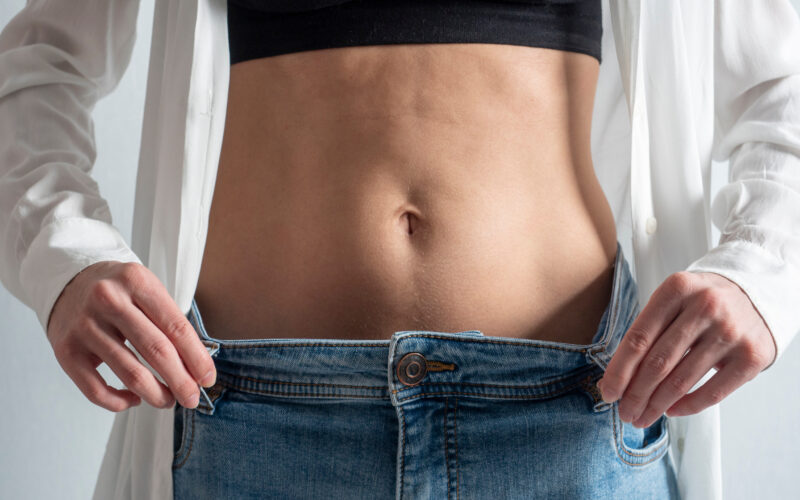Growing up with an immigrant father from Italy, I was raised with a love of food. While dinner may not always have been the most balanced of menus (think pasta with a side of bread), it still gave me an appreciation for home cooked meals and family time spent lingering around a table of yummy food. As I grew older, and made friends from different ethnic backgrounds, I was surprised to find that many young women my age ate very little at dinner, or skipped breakfast, or considered a meager handful of nuts to be an adequate snack (after all, no true Italian “nona” would have let me leave a meal without seconds, not to mention no food at all!).
While I questioned whether it was worth giving up tasty meals and family bonding, I still envied my meal-skipping friends for their figures. I was not an overweight girl, but nonetheless I had bought into the female American cultural desire to be skinny, lean, “fit.”
But what impact does eliminating as much body fat as possible have on the female anatomy? What kinds of processes are disrupted in a woman’s body by the food choices she makes or foregoes entirely? Let’s look at how fertility and nutrition are connected, plus how to know if you might be too thin to get pregnant, and what you can do about it.
How lean is too lean?
While being overweight can negatively impact fertility, we also know that being too lean can cause infertility in women. What do we mean by too lean? Generally, women with a body mass index (BMI) of less than 18.5 are considered underweight. For reference, a woman who is 5’4” and weighs 108 lbs or less would be considered underweight.
But, as we’ll explain below, there’s also a connection between the quality of our nutrition. Not all calories are created equal, as we instinctively understand when we consider the nutrition in Oreo calories versus avocado calories. For this reason, some women may be at a “normal” weight but have inadequate nutrition to ovulate.
What’s the connection between fertility and nutrition?
It is well-known in the scientific community that reproduction is one of the first bodily processes to halt in female mammals when there is insufficient food intake [1]. This is because – as any woman who has been pregnant can tell you! – reproduction requires a significant amount of energy over-and-above regular caloric needs for normal metabolic processes.
If you don’t take in enough nutrient-dense calories (again, not just any calories will do!), and/or if you exercise too much, you may end up with hormonal imbalances that can include low estrogen, high cortisol, low insulin, and low thyroid levels. The result may be that you stop ovulating regularly (known as anovulation). And, of course, ovulation is a non-negotiable for conception.
How do you know you’re not ovulating?
A key sign that you’re not ovulating, or not ovulating regularly, is having irregular cycles. If the deficit between your nutrient intake and your nutritional needs is big enough, your period may stop altogether. This is called amenorrhea.
Why female athletes may be especially likely to be too thin to get pregnant
Forbes Health, discussing “Weight Loss Plans for Women in 2024”, noted that “men often lose weight more quickly than women… Additionally, women tend to have less muscle mass and a higher amount of body fat, which burns less [sic] calories than muscle.” It’s easy to see why this biological difference may tempt female athletes, especially those competing in sports where leanness is especially advantageous (think running, dance, soccer), to workout excessively and/or not eat enough.
In female athletes, over-exercise with or without under-eating leads to relative energy deficiency in sports, or RED-S. During RED-S, the body undergoes too much stress to maintain normal bodily functions, like reproduction. So, in favor of conserving its already low energy levels, the body will stop ovulating (good-bye periods, hello amenorrhea). Sadly, as this article from Women’s Health notes, as many as 69% of college-aged female dancers and 65% of female long-distance runners do not have regular cycles. (Remember that irregular cycles may be a sign of anovulation – meaning no ovulation – and that without ovulation, you can’t get pregnant!)
Frequently, over-exercise is simply one side of the coin, with under-eating being the other. Intense exercise, on its own, does not necessarily cause issues, but when it comes with inadequate nutritional intake to compensate for the energy loss, RED-S can rear its ugly head. All of this together can lead to female athletes simply being too lean to get pregnant.
Separate from over-exercise, under-eating can cause amenorrhea too
Certainly, women who over-exercise and under-eat are likely to stop ovulating. However, regardless of their exercise levels, sometimes women just don’t eat enough, and this also causes problems. Women may be too thin due to an eating disorder, and one of the chief diagnostic clues for anorexia nervosa is lack of menstruation [1]. A woman may also be too thin because of celiac disease (which can cause its own issues with fertility, especially if it’s undiagnosed) or other food allergies, dietary restrictions (think veganism), and aversions that cause her to severely restrict what she can eat.
Too-rapid weight loss may also cause amenorrhea
Sometimes women lose weight too suddenly and experience loss of their period for a season – even if the loss puts them at a healthy weight (as our own editor, Grace Emily Stark, relates). The late Marilyn M. Shannon wrote about her experience advising a young woman who had achieved a healthy weight after dieting, but still suffered prolonged amenorrhea. Shannon, a women’s health and hormone expert, remarked, “I advised her to regain just a few of the lost pounds. In less than three months, after she had regained seven pounds, she conceived” (Shannon, Fertility, Cycles & Nutrition, 159).
Shannon isn’t the only one to find that a few pounds can make a big difference. The late Harvard researcher and biologist Rose Frisch noted how a weight loss or gain as little as three to five pounds in some women can stop or restart the menstrual cycle (Frisch, Female Fertility and the Body Fat Connection, 17).
Women who are underweight and conceive may go on to have pregnancy problems
Adequate body fat is not just necessary to get pregnant. It’s necessary, and in larger amounts, throughout pregnancy as well. Being underweight during pregnancy can cause problems like intrauterine fetal growth restriction (IUGR, where the baby is not growing enough), premature labor and birth, low birth weight (which can cause developmental problems later on), and even miscarriage. As my midwife told me once during pregnancy, “Your body will always choose to nourish the baby before it nourishes you.” But if your body has very little to nourish the baby with, serious consequences could follow.
How to gain weight healthily and safely
If you are underweight, or think you may be too lean because you are struggling with infertility or miscarriage, how can you gain weight in a healthy way? A good start might be Victoria Coglianese’s “protein, fat, and fiber” approach over at Wonderfully Made Nutrition. (You can listen to our podcast episode with her, here!).
Eat protein, fat & fiber at each meal — and don’t forget the healthy carbs
What does this approach look like, in practice? First, aim to have a good source of protein with each meal, such as eggs or meat. Then, make sure it’s accompanied by a healthy fat, like avocado, olive oil, a fatty fish like salmon, or nuts. Finally, round it all out with a good source of fiber, like dark leafy greens, nuts and seeds, colorful veggies, and berries. Although Coglianese’s approach is most frequently used by women who are trying to lose weight, this is nevertheless a sustainable method of nourishing your body well and keeping it satisfied until the next meal. If you follow the protein-fat-fiber model, you should be less likely to overeat or undereat.
Don’t underestimate the value of healthy carbs, either. Nutritional therapist Jo Scott-Dalgleish stresses the importance of eating nutrient-dense carbs as fuel for energy – particularly those obtained from fruits and vegetables, which also contain a host of essential vitamins and minerals. Marilyn M. Shannon also notes that women who have restricted their nutrition due to athletic performance goals are often depleted in essential fatty acids, dietary fats, and protein. She suggests eating whole-fat dairy foods, meats that are not too lean (think the Atlantic diet), and nuts as excellent sources of good fats that encourage healthy weight gain. Eating starchy vegetables like sweet potatoes, white potatoes, and whole grains are also helpful ways to gain weight. Foods like hard-boiled eggs, peanut butter toast, yogurt (full fat, and without added sugar), and cheese with nut- or whole grain crackers can be good snacks.
The bottom line on being too thin to get pregnant
For many of us, the desire to lose weight is nothing new. And sometimes, losing a little weight to get closer to a healthy BMI can be a smart move for both your health and your fertility (although BMI has its limitations as a metric of health). As we’ve seen, however, being too lean is not all it’s cracked up to be, and can come at the cost of our fertility. In other words, you can indeed be too thin to get pregnant.
The more women come to understand and appreciate their own unique bodies, the more we will recognize when we are too lean or too fat, without reference to Hollywood actresses or YouTube influencers. Our reference should be ourselves, our unique situations, and our biomarkers, which includes our fertility (which women learn to interpret via cycle charting!).
References:
[1] Wade, George N, and Juli E Jones. “Neuroendocrinology of nutritional infertility.” American journal of physiology. Regulatory, integrative and comparative physiology vol. 287,6 (2004): R1277-96. doi:10.1152/ajpregu.00475.2004Additional Reading:
First steps to consider when you’re trying to conceive
Five ways to naturally induce ovulation and regulate your cycle







